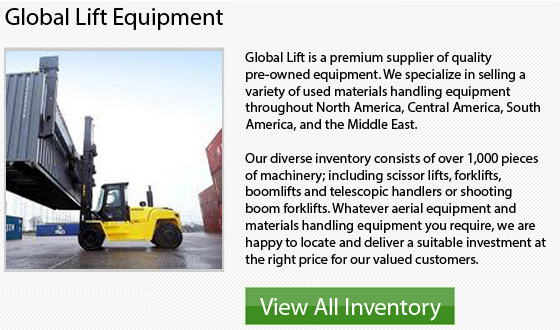
Here are add-ons which are helpful for narrow aisle forklifts:
Side shift: The side shift option permits the lateral movement of the load without having to move the truck. This enables loads to be precisely placed.
Tilt mast: The optional tilt mast enables the forks to shift both forwards and backwards. This is perfect in cases where loads aren't completely level. To gain greater stability when transporting a loaded truck, the mast can be tilted backwards.
Extendable forks: The option of extendable forks helps the "reach" of the lift truck to extend for stacking pallets one in front of the other, known as "double-deep" loading.
Operator platforms: Some NA lift trucks have operator platforms that can raise and lower the operator while simultaneously lowering and raising the forklifts forks. This offers utmost control and visibility while handling loads at heights of 6 m to 9 m.
Forklift on a Ramp
Operators have to be correctly trained and are required to be tested and licensed. It is vital for anyone utilizing a forklift to be really educated about safety problems and rules. Drivers should know how to make adjustments in situations where the load weight alters the center of gravity or on uneven surfaces. Safety measures include the safe operation of a forklift on a ramp, that is frequently occurring as the driver will normally have to drive up and down ramps to unload and load containers.
Guidelines for Operating a Lift Truck on a Ramp
1 When approaching and driving up and down the ramp, drive slowly. The risk of accidents is increased while driving at high speeds because this can upset the equipment's center of gravity.
2 Drive the forklift in reverse while moving up an incline on a ramp while not carrying a load.
3 Drive forward while moving down an incline on the ramp with no load.
4 While moving up or down a ramp while carrying a load, tilt the forks back slightly to shift the load's center closer to the front of the machine.
5 To make the load more stable, drive forward up a ramp when carrying a load.